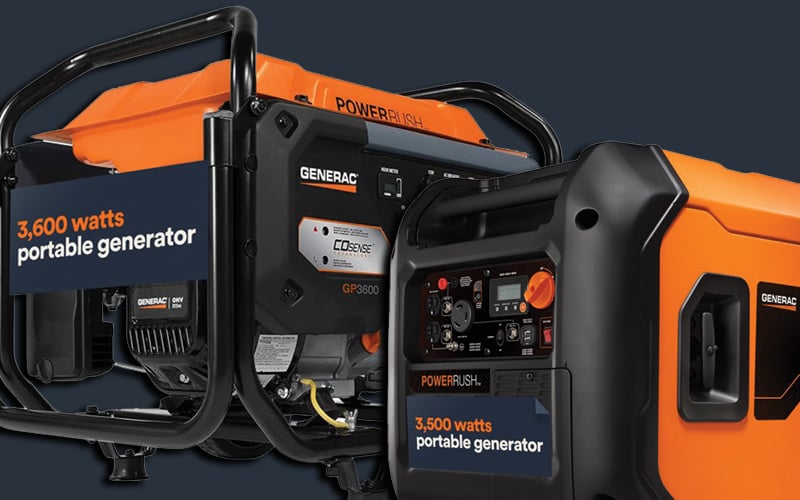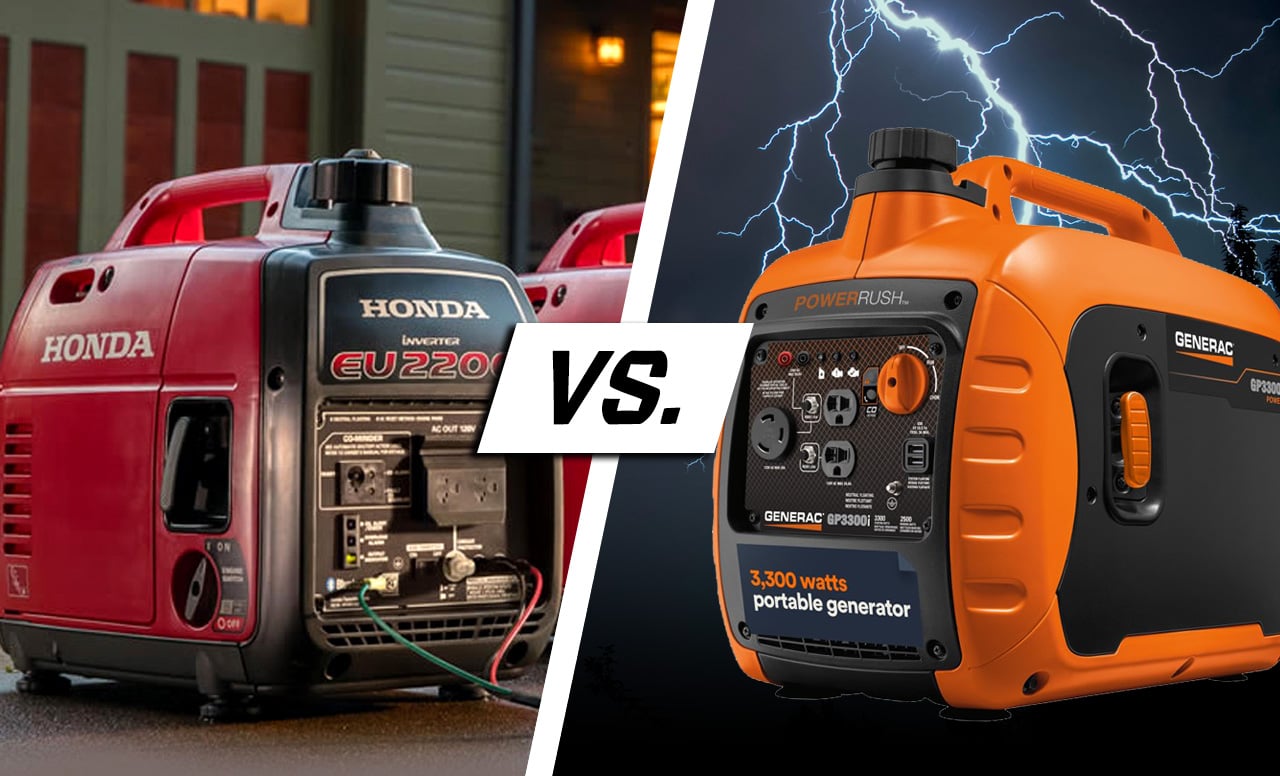Generator Wattage Reference Guide

When choosing a generator, it's crucial to consider and understand your power needs. To determine the right generator for your application, start by calculating the total wattage required to run essential appliances and devices during a power outage or off-grid situation.
How Much Wattage Do I Need In A Generator?
A generator's running watts (also called rated watts) refer to the continuous amount of power it can supply over an extended period of time. This is the amount of wattage the generator can handle to keep appliances and equipment running steadily without overheating or damaging the system. For example, if a portable generator is rated for 3,500 running watts, it can continuously power appliances or devices that add up to 3,500 watts while it's operating.
This is different from starting watts (also called surge watts), which is the extra power the generator can provide for a short burst (typically a few seconds) to start motor-driven appliances like refrigerators, air conditioners, or power tools — which often need more power to start than to run.
Calculating Your Generators Required Watts:
For example, if you determine the essentials you want to power with your generator are:
Refrigerator/Freezer: requires 700 running watts + 2100 starting watts
Microwave: requires 1500 running watts + 0 starting watts
75 Watt Light Bulb (x6): 450 running watts + 0 starting watts
With this example you need a generator that produces at least 2650 total running watts (allowing power continuously to all your essentials) + 2100 total starting watts.
= TOTAL 4750 Watts Required
By adding the total number of running watts with the total number of starting watts powering your essentials will require, you can determine the minimum amount of watts your generator will need to supply.
Use the wattage reference charts below to determine the total number of running watts and starting watts your generator will need to supply to power up your essentials.
Home Appliances Wattage Reference Guide:
| DEVICE | RUNNING WATTS |
| Air Conditioner (12,000 BTU)* | 1700 |
| Air Conditioner (24,000 BTU)* | 3800 |
| Air Conditioner (40,000 BTU)* | 6000 |
| Coffee Maker | 1200 |
| Deep Freezer* | 700 |
| Desktop Computer | 400 |
| Laptop Computer | 75 |
| Light Bulb (75 Watt) | 75 |
| Microwave | 1500 |
| Refrigerator/Freezer* | 700 |
| Sump Pump* | 2100 |
| Television | 200 to 500 |
| Toaster | 1200 |
| Window AC (12,000 BTU)* | 3250 |
*Allow 3 times the listed watts for starting these devices (starting watts).
WorkSite Wattage Reference Guide:
| DEVICE | RUNNING WATTS |
| Air Compressor (1 HP)* | 2000 |
| Airless Paint Sprayer (1/3 HP)* | 600 |
| Belt Sander (3")* | 1000 |
| Circular Saw* | 800 to 1000 |
| Hand Drill* | 250 to 1100 |
| Lithium Ion Battery Charger | 500 |
| Quartz Halogen Work Light | 1000 |
| Reciprocating Saw* | 1440 |
| Table Saw (10")* | 1750 to 2000 |
| Wet/Dry Vac* | 900 |
*Allow 3 times the listed watts for starting these devices (starting watts).
Recreation/Play Wattage Reference Guide:
| DEVICE | RUNNING WATTS |
| Blender | 1000 |
| CD Player | 100 |
| Cell Phone Charger | 10 |
| DVD Player | 100 |
| Electric Grill | 1650 |
| Radio | 50 to 200 |
| RV Air Conditioner (15,000 BTU)* | 1800 |
| Slow Cooker | 250 |
*Allow 3 times the listed watts for starting these devices (starting watts).
Contact Us
Contact the A&M Industrial Safety Team for help selecting the right generator for your needs. Our team specializes in emergency preparedness and can help you mitigate risks to your home, worksite or facility.


